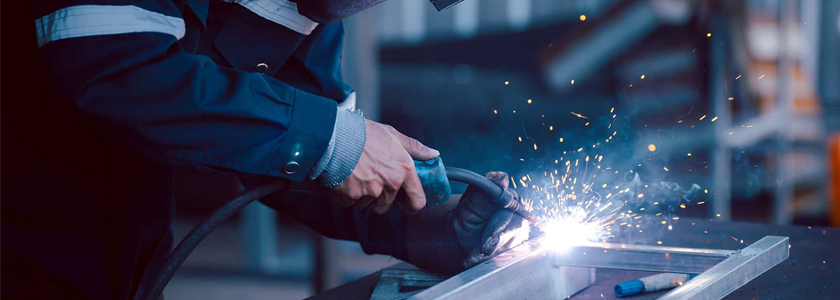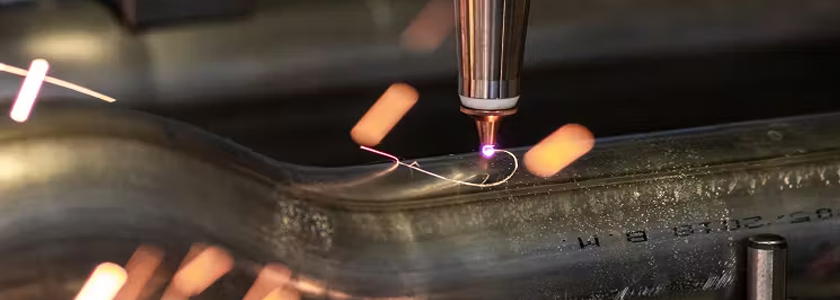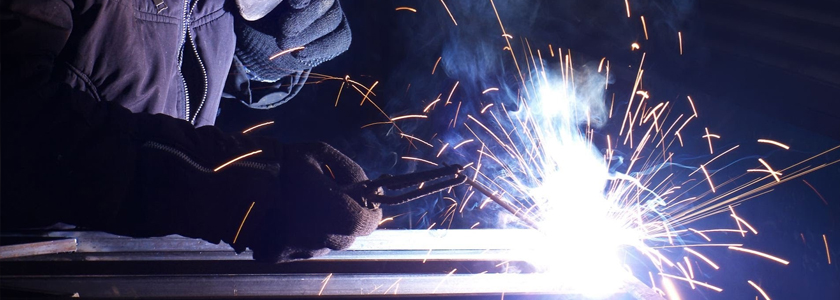Core Welding Services
Core welding services are the backbone of many industries, offering essential solutions for metal joining, repair, and fabrication. These services cater to diverse needs, from intricate precision welding to large-scale structural projects. Utilizing advanced techniques like TIG, MIG, and Stick welding, core welding ensures strong, durable, and reliable joints that meet the highest industry standards.

Precision Welding :
Our precision welding services ensure strong and durable joints for a wide range of metals, including steel, aluminum, and stainless steel. We specialize in:
TIG Welding : Ideal for thin materials and projects requiring clean, precise welds.
MIG Welding : Efficient for larger projects involving thicker materials.
Stick Welding (SMAW) : Reliable and versatile for fieldwork and repairs.
Custom metal fabrication is another vital aspect of core welding services. It transforms raw materials into finished products tailored to specific requirements. From structural components and decorative metalwork to machine parts and tools, custom fabrication combines innovation and craftsmanship. The process often begins with design consultation, ensuring that each project aligns with the client’s vision and functional needs.
Structural welding forms the foundation of many construction and industrial endeavors. From steel frames and beams to complex assemblies, these services are crucial for building safe and robust structures. Certified welders adhere to strict safety and quality standards, ensuring that each project is completed to withstand the demands of its intended application.
Repair & Maintenance
Welding repair is an important task in industries that use heavy equipment like pressure vessels. It involves connecting metal parts using heat, pressure, and sometimes filler material. Proper welding repair requires specialized skills, knowledge, and equipment to ensure the welding repair is performed accordingly. Production welding typically works with new, clean metals, while maintenance welding deals with dirty or heat-affected metals. Over time, the surface area of metals is coated in oil, dirt, corrosion, rust, or oxidation that must be removed prior to welding.

Soldering Repair
Soldering bonds two or more metal objects together by melting a different kind of metal and using it as a kind of glue. This bonding metal, usually tin and lead, is called “solder.” It comes as wire on a spool, heated to its melting point by an electric tool called a soldering iron (or soldering gun).
Flux in welding Flux is a mixture of various minerals, chemicals, and alloying materials that primarily protect the molten weld metal from contamination by the oxygen and nitrogen and other contaminants in the atmosphere. The addition of certain chemicals and alloys also help to control arc stability and mechanical properties.
Weld failure A weld defect results from a poor weld, weakening the joint. It is defined as the point beyond the acceptable tolerance in the welding process. Imperfections may arise dimensionally, wherein the result is not up to standard. They may also take place in the form of discontinuity or in material properties.
Metal Fabrication
Metal fabrication is the creation of metal structures by cutting, bending and assembling processes. It is a value-added process involving the creation of machines, parts, and structures from various raw materials. Simply put, “metal fabrication” is defined as creating products or structures by cutting, bending, and/or assembling metal material. It's largely considered a value-added process as it consists of putting together actual products or structures from metal raw material.

Types of metal fabrication
Sheet metal fabrication, machining, and welding each have unique advantages and applications, and choosing the right type of fabrication for your project can improve efficiency, reduce costs, and enhance the quality of your products.
Sheet metal fabrication Sheet metal fabrication is the process of turning flat sheets of steel or aluminium into metal structures or products, by cutting, punching, folding and assembling. Sheet metal can be cut, bent or stretched into nearly any shape, which is generally done by cutting and burning the metal.
Machining Machining is a manufacturing process that involves removing material from a block of raw material to create a desired shape. It's a subtractive manufacturing process, meaning material is removed to create the final shape.
Machining Welding is a fabrication process whereby two or more parts are fused together by means of heat, pressure or both forming a join as the parts cool. Welding is usually used on metals and thermoplastics but can also be used on wood. The completed welded joint may be referred to as a weldment.
Cutting & Machining
The welding process is a complex process that involves heat and liquid-metal transfer, chemical reactions. A gradual formation of the welded joint is obtained through liquid-metal deposition and subsequently there is a transformation from cooling into the solid state. and is below the solidus temperature of base metal. Purpose. The primary difference between a cutting torch and a welding torch is their purpose. A cutting torch is designed to cut through metals, while a welding torch is meant to join metals.

cutting process
Cutting processes work by causing fracture of the material that is processed. Usually, the portion that is fractured away is in small sized pieces, called chips. Common cutting processes include sawing, shaping (or planing), broaching, drilling, grinding, turning and milling.
Cutting and Welding temperature It is approximately 6,000 °F (3,320 °C) and provides enough heat to easily melt steel. In the inner cone the acetylene breaks down and partly burns to hydrogen and carbon monoxide, which in the outer cone combine with more oxygen from the surrounding air and burn.
Machine cutting In the context of machining, a cutting tool or cutter is typically a hardened metal tool that is used to cut, shape, and remove material from a workpiece by means of machining tools as well as abrasive tools by way of shear deformation. The majority of these tools are designed exclusively for metals.
Welding Service
Welding services involve the process of joining metal pieces together using heat and often additional materials to create a strong and durable connection. Welders use various techniques, such as MIG or TIG welding, to melt and fuse metals, ensuring they bond seamlessly.

Expensive Welding
In addition, TIG welding requires more prep work, which also adds to the cost. Finally, MIG welding supplies and machines tend to be less expensive than TIG. All of these factors combine to make TIG welding more expensive than MIG welding.
Benefit of welding In conclusion, pursuing a career in welding can offer many benefits, including high demand, competitive salary, job security, opportunities for advancement, creativity, hands-on work, travel opportunities, independence, variety, and job satisfaction.
Affordable Welding Stick Welding is generally the Affordable due to its inexpensive equipment and lack of need for external shielding gas.
